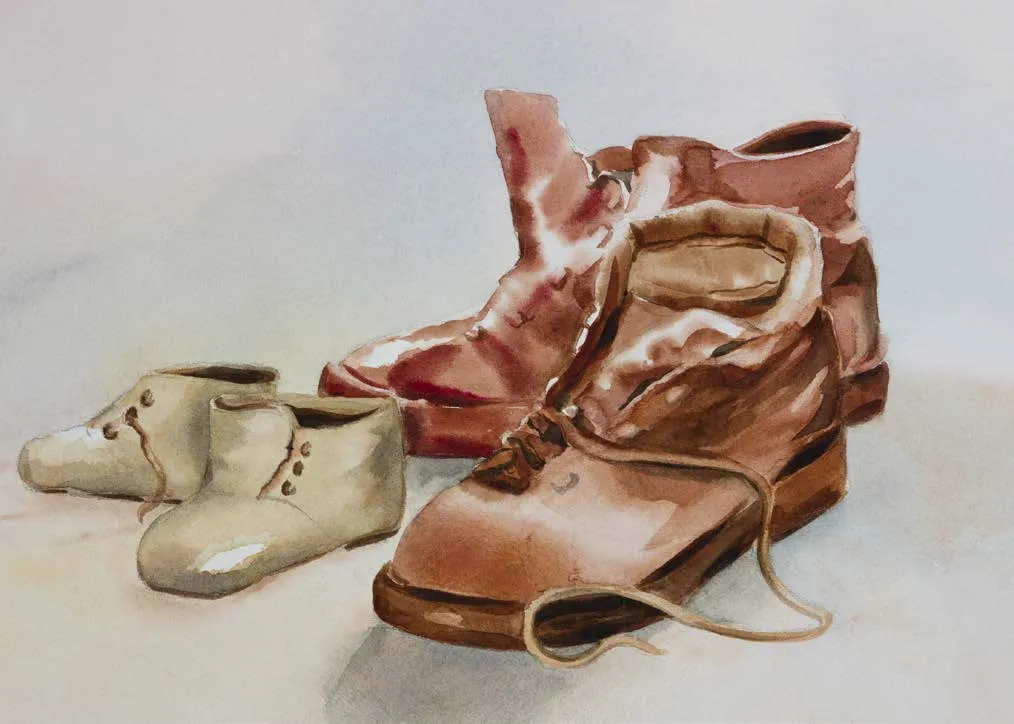The Virtue of a Shoemaker
2019-09-05ByZhuXiaotu
By Zhu Xiaotu
Something went wrong with the soles of my shoes,so I sent them to the old shoemaker. When I went to fetch them, I was fairly puzzled when I found that the front rings on the bottom of the soles were stuck with rubber belts. “There is nothing wrong here!”
The old shoemaker looked up and said: “The soles are unevenly weighted. That’s why the soles are worn crooked, and now I have set them right.”
The soles were stuck flat and the rim was smooth, apparently after proper polishing. The old shoemaker seemed to know my feet better than myself. I could only see the outer appearance, but he could envision the way I walk.
Residents on our street are used to getting their shoes mended by the old shoemaker.His shoe-mending booth is different from other cobblers’in that he doesn’t have to be exposed to the cold and wet out in the open. Instead, he rented a booth by the outside wall of a store chain within the market,with a very small front. In the market, miscellaneous grains,seafood products, chickens and ducks, desserts, and cooked meat are sold. Outside the market,sundry goods are sold, yet there is no shoe repairing business whatever. There is a great deal of passenger flow and a lot of demands, mostly local residents.Unlike other repairmen who take whatever they can manage, the old shoemaker refuses to take leather bags and rejects umbrellas when handed to him, mumbling“Can’t do umbrellas.”
The shoemaker has been retired and enjoyed a peaceful life at home. After his wife’s death,his son and daughter urged him to live with them in turns, yet he felt quite uneasy. The kids have their own families after all, he said, he will only prove to be a burden to them. He wanted to go back home yet was afraid of being alone so he decided to find something forhimself. He knew nothing else except his old profession, so he asked his kids to rent this small front to repair shoes in.


The old shoemaker would put on a pair of bifocal glasses, always hung on his chest each time he was ready to work, hold up the shoe to check what the problems were and give some suggestions,sometimes not for the mere purpose of fixing the shoes, but also advising the customer that the shoes were not worth mending or it might be hurting their feet—absolutely ignorant of the fact that it might irritate his potential customer.
He always laid great emphasis on quality, yet he lacks even a brief summary for good quality.For him it probably referred to what he frequently mentioned:comfort, duration, real leather,and a sturdy heel—and nothing fake. Shoes were for walking, and if you got it wrong, you might get end up with a sore back and painful knees. The old shoemaker didn’t quite understand the prevalent trends nor what design really meant. Yet what he said always made sense. If he found cardboard in between the sole, the amiable old man would grumble loudly: “It is an evil guy who makes such shoes.”
Most of the time when a customer brought in their shoes,he would say: “You can leave now. I’ve got it. Come and fetch them tomorrow.” In his booth there is leather, soles, heels, white latex, yellow gum, glue for heels,leather peeler, polishing machine,pincers, hammers, nails etc., all in good array. The old man was serious even about unimportant matters and never put his tools away randomly. There was never any garbage on the ground as he always cleaned up in time. He would feel very uncomfortable if the shop looked dirty. Once on shift, he would wrap his leather apron up around himself, which gave a sense of thickness and strength, and wore a pair of deep blue sleeves on both arms. When sewing shoes, he keeps his hands strong and steady—they are rough with a lot of calluses, yet very broad and thick. At work, his eyes were bright, and you could feel his happiness, but he never uttered it,and he seldom laughed.
The old cobbler would also take initiative to check for invisible defects for the customers like a doctor. He would put his hand into the shoe and explore high and low for troubles that may cause discomfort in use, such as whether the pad was of the right size and the insole is cushioned all the way to the head of the shoe, whether the insides were flat and whether the nails were properly fixed. One could feel totally assured when the shoes were handed over to him. Once the shoes were fixed, he would carefully clean them with a piece of flannel and finally polish themuntil they looked shinny and bright as if they were just fresh from the factory.
All the residents in the vicinity were benefited from the old shoemaker. All those who had broken shoes got them repaired and their feet were also taken good care of here. Even a passing junkman dragging along with a pair of broken shoes would be called in by the old man. He would sew them if he could manage, or he would fix for him another pair discarded by other customers.Things going on like this, he gradually developed a good relationship with the community.From time to time, on his table were laid crisp peach cookies or roasted seeds and nuts from his next-door neighbors. Some other people even offered him fresh cabbages to take back home. In this way they took care of each other for a long time.
Those well-acquainted neighbors have the chance of listening to the old man’s anecdotes from his life in a shoe factory. The old man mentioned that he once made a pair of leather shoes stitched with bowknots for his wife, which was exquisite—so fancy that he could hardly make another pair, and all his skills were now left only for shoe mending.
